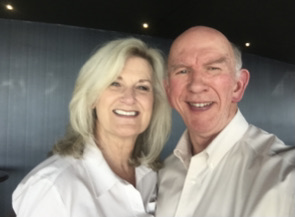
Like many young boys, retired Maj. Gen. Wilbert D. “Doug” Pearson Jr. ’69 looked to his father in adoration, mimicking all he did. Wilbert Pearson Sr. served in World War II as a flight engineer for a powerful American bomber, the Consolidated B-24 Liberator, and came back home with an enthusiasm for aviation mechanics and the military, which his son shared.
This appreciation for aviation led Pearson to get his degree from Texas A&M University in aerospace engineering, and he hopes to help others who share this passion. To do this, Pearson and his family established a scholarship for students in the Department of Aerospace Engineering at Texas A&M for students pursuing their pilot license.
In Pearson’s young eyes, aviation became a concept that must be explored and understood. From the time he was six years old, he was building working model airplanes copied from pictures in his family’s set of encyclopedias.
In high school, Pearson became fascinated with flight tests and test pilots. Every day, he picked up the local newspaper to read the latest updates on the Edwards Air Force Base’s work on the North American X-15, an experimental rocket-powered plane. He was hooked.
While at Texas A&M, he joined Squadron “Gator” 2 and the Air Force ROTC and spent his spare time at Easterwood Airport cutting grass, pumping gas and earning enough money to pay for flying hours for his private pilot license.
He also worked for the aerospace engineering department at the flight mechanics lab, an experience that would be transformative in his career. Researchers in the lab took concepts designed in the classroom, built them and implemented them to demonstrate whether they worked in a hands-on experience.
The sky's no limit
After graduating from Texas A&M in 1969, Pearson’s experience and passions collided as he began a 34-year career in the United States Air Force. Upon graduation of Air Force Test Pilot School, he was a test pilot for many of the well-known aircraft of the time. While flying an F-15 Eagle, he was the first and only person to launch an antisatellite missile, which successfully destroyed a satellite in Earth’s orbit.
Pearson’s background aided him in helping write the air defense plans using the F-15. “I used a combination of understanding the airplane because of my engineering background and knowing how to fly the airplane in confronting the enemy,” he said.
At the pinnacle of his career, Pearson was appointed commander of the Air Force Flight Test Center at Edwards Air Force Base, California. He was responsible for safely executing approximately 200 programs to develop and test fighters, bombers, transport, tankers and nearly all other Air Force weapon systems.
In 2004, Pearson retired from the Air Force but soon received a call from Lockheed Martin Corporation to manage the F-35 Lightning as vice president of the flight test program. He was successful in establishing all three of its Air Force, Navy and Marine Corps variants in flight testing. Pearson retired from Lockheed Martin in 2011, and for the next several years, he provided executive consulting services to various government and civilian organizations.
Investing in the future
Pearson and his wife Teresa have five children, USAF retired Lt. Col. Todd Pearson ’99, Rebecca “Becky” Pearson ’00, Rich Lau, Travis Lau, and Jessica Davis. Now, at a place where his experiences, knowledge and wisdom can be used to propel others forward, Pearson and his family are giving back through an endowment to enable the success of other engineers.
“We’re at a point in our lives where we want to give back and say thank you for everything,” Pearson said. “We started with little and have been blessed with the successes we have had. We want to help a few people that may be in the same boat have the opportunity to succeed.”
To inspire students to engage and be hands-on in operational problems to solve the nation’s most challenging aerospace issues, the Teresa and Major General Doug Pearson ’69 Excellence in Aerospace Engineering Scholarship will be awarded with a preference for students who have or are pursuing a pilot license.
“I’m hoping to encourage someone who, like me, is interested in the operational side of flying and not just the technical side,” Pearson said. “I hope it inspires people to move on in the operational way and helps them get their degree and pursue a career doing things as well as designing things.”
Ultimately, both Pearson and Teresa are excited to see their endowment take flight when placed in the hands of eager Aggie engineers.
“This is our opportunity to help and encourage somebody to do more than they ever thought they could,” Pearson said. “If we help someone, then that someone tends to help someone else and it goes right on down the line, which is truly the Aggie way.”
How To Give
Endowments supporting the students in the college have an immeasurable impact on their education. If you are interested in supporting the College of Engineering and its departments or would like more information on how you can give, please contact one of our development officers.